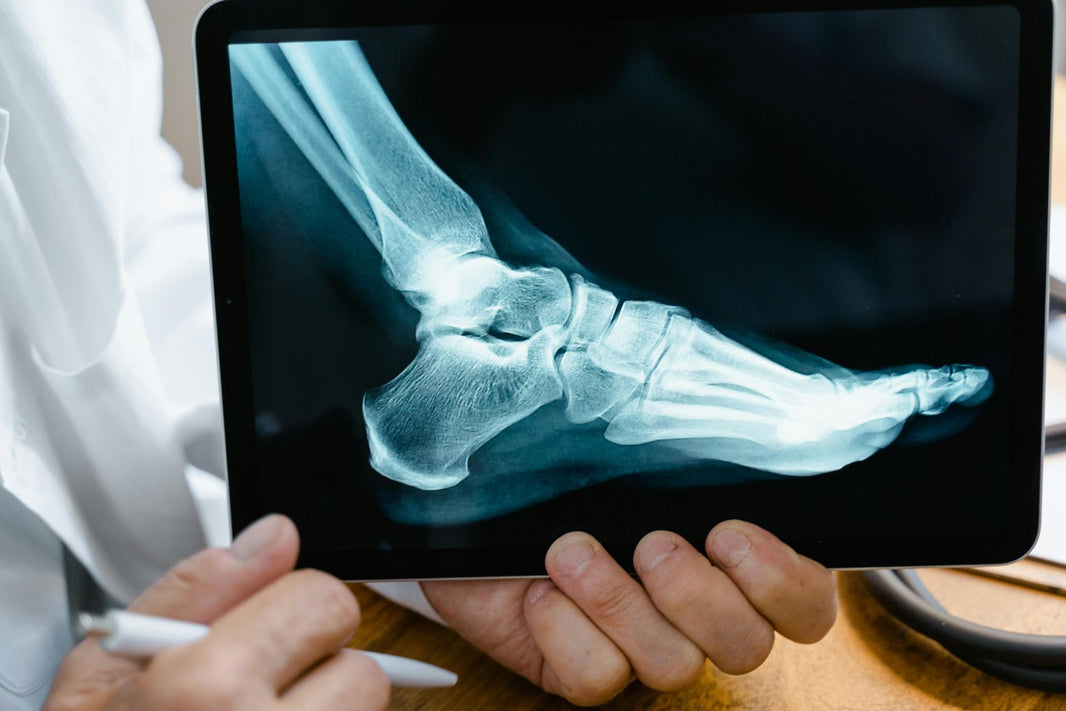Shoulder bursitis, a common condition causing pain and inflammation in the shoulder joint can significantly impact daily life. Whether you’re an athlete, a desk worker or someone managing chronic shoulder issues, knowing how to alleviate the discomfort is crucial. Among the most popular and accessible treatments are heat and ice therapy. But which one works better for shoulder bursitis and how do you use them effectively? Let’s explore the science and practical applications of temperature therapy for shoulder bursitis relief.
What Is Shoulder Bursitis?
To understand why temperature therapy works, it’s helpful to first grasp the basics of shoulder bursitis. The condition arises when the bursa, a small fluid-filled sac that reduces friction between bones, tendons, and muscles becomes inflamed. This inflammation often results from repetitive movements, overuse or an acute injury. Common symptoms include:
-
Pain and tenderness in the shoulder joint.
-
Swelling and redness.
-
Limited range of motion.
-
Pain that worsens with activity or pressure.
Treatment often includes rest, anti-inflammatory medications, physical therapy and temperature therapy, the latter being a cornerstone of non-invasive pain management.
Ice Therapy: Reducing Inflammation in Shoulder Bursitis

Ice therapy or cryotherapy is considered a recognized treatment for acute injuries and inflammation. The therapy causes blood vessels to constrict, reducing blood flow to the area aiding in swelling, inflammation and pain.
When to Use Ice Therapy
Ice therapy is most effective during the acute phase of shoulder bursitis typically within the first 48-72 hours of symptom onset. If your shoulder is swollen, red or warm to the touch, ice should be your first choice.
How to Apply Ice Therapy
Follow these steps for safe and effective ice therapy:
-
Apply an Ice Pack or Cold Compress: You can apply a commercially available ice pack, a bag of frozen peas or even a homemade ice pack wrapped in a thin towel.
-
Apply for 15-20 Minutes: Place the ice pack on the affected shoulder for 15-20 minutes. Avoid contact with direct skin to prevent frostbite.
-
Repeat Every 2-3 Hours: For the first couple of days repeat the process every 2-3 hours to keep inflammation in check.
-
Listen to Your Body: If the area becomes numb, remove the ice pack immediately.
Scientific Backing
Studies have consistently shown that cryotherapy reduces acute inflammation and pain by slowing down cellular metabolism and nerve conduction. A 2013 review in the Journal of Athletic Training confirmed that ice therapy is highly effective for managing soft tissue injuries, including bursitis.
Heat Therapy: Promoting Healing in Shoulder Bursitis

Heat therapy on the other hand helps to increase blood flow to the affected area. This promotes muscle relaxation, reduces stiffness and accelerates the healing process. Heat is particularly useful for chronic shoulder bursitis or when stiffness becomes a primary concern.
When to Use Heat Therapy
Heat therapy is best suited for:
-
Chronic shoulder bursitis that lasts beyond the initial inflammatory phase.
-
Stiffness or muscle tension around the shoulder joint.
-
Pain that feels better with warmth and movement.
Avoid using heat if the shoulder is visibly swollen, red or warm to the touch, as this could worsen inflammation.
How to Apply Heat Therapy
Here’s how to safely apply heat therapy:
-
Choose Your Heat Source: Options include a heating pad, hot water bottle or a warm towel. Microwaveable gel packs are also a great choice.
-
Check the Temperature: Ensure the heat is warm but not scalding to avoid burns.
-
Apply for 15-20 Minutes: For 15-20 minutes apply the heat source on your shoulder.
-
Repeat as Needed: Use heat therapy 2-3 times daily particularly before physical activity or stretching.
Scientific Backing
A study in the Journal of Physical Therapy Science found that heat therapy improves blood flow, reduces muscle stiffness, and enhances joint mobility. For shoulder bursitis, these effects can be particularly beneficial in the later stages of recovery.
Heat vs. Ice: Which Should You Choose?
Deciding between heat and ice for shoulder bursitis depends on the stage of your condition and your specific symptoms. Here’s a quick guide:
| SYMPTOM/ STAGE | ICE THERAPY | HEAT THERAPY |
| Acute inflammation | Best choice | Avoid |
| Chronic pain or stiffness | Less effective | Best choice |
| Post exercise soreness | Effective | Avoid |
| Pre- exercise preparation | Less effective | Effective |
For many people, alternating between ice and heat known as contrast therapy can provide comprehensive relief. For example, use ice after a strenuous activity to control inflammation and heat before exercise to loosen up the joint.
Practical Tips for Combining Heat and Ice Therapy in Shoulder Bursitis
If you’re considering alternating between heat and ice, follow these guidelines:
-
Start with Ice: Apply ice therapy for 10 minutes to reduce inflammation.
-
Switch to Heat: After a 10-minute break, use heat therapy for another 10 minutes to relax muscles and improve circulation.
-
Repeat the Cycle: You can alternate for up to an hour ensuring you monitor your skin for any signs of irritation.
Final Thoughts
Heat and ice therapy are simple yet powerful tools for managing shoulder bursitis. Ice is your best ally in the initial stages of inflammation, while heat becomes your go-to as stiffness and chronic pain take center stage. By understanding when and how to use these therapies and combining them with other treatments you can take control of your recovery and get back to doing what you love, pain-free.
References
-
Bleakley, C. M., Costello, J. T. (2013). Do thermal agents affect range of movement and mechanical properties in soft tissues? A systematic review. Journal of Athletic Training, 48(4), 436-443.
-
Ariana M, Afrasiabifar A, Najafi Doulatabad S, Mosavi A, Behnammoghadam M et al., 2022, The Effect of Local Heat Therapy versus Cold Rub Gel on Pain and Joint Functions in Patients with Knee Osteoarthritis. Clinical Nursing Research., 31(6):1014-1022.
-
Hubbard, T. J., Denegar, C. R. (2004). Does cryotherapy improve outcomes with soft tissue injury? Journal of Athletic Training, 39(3), 278-279.








